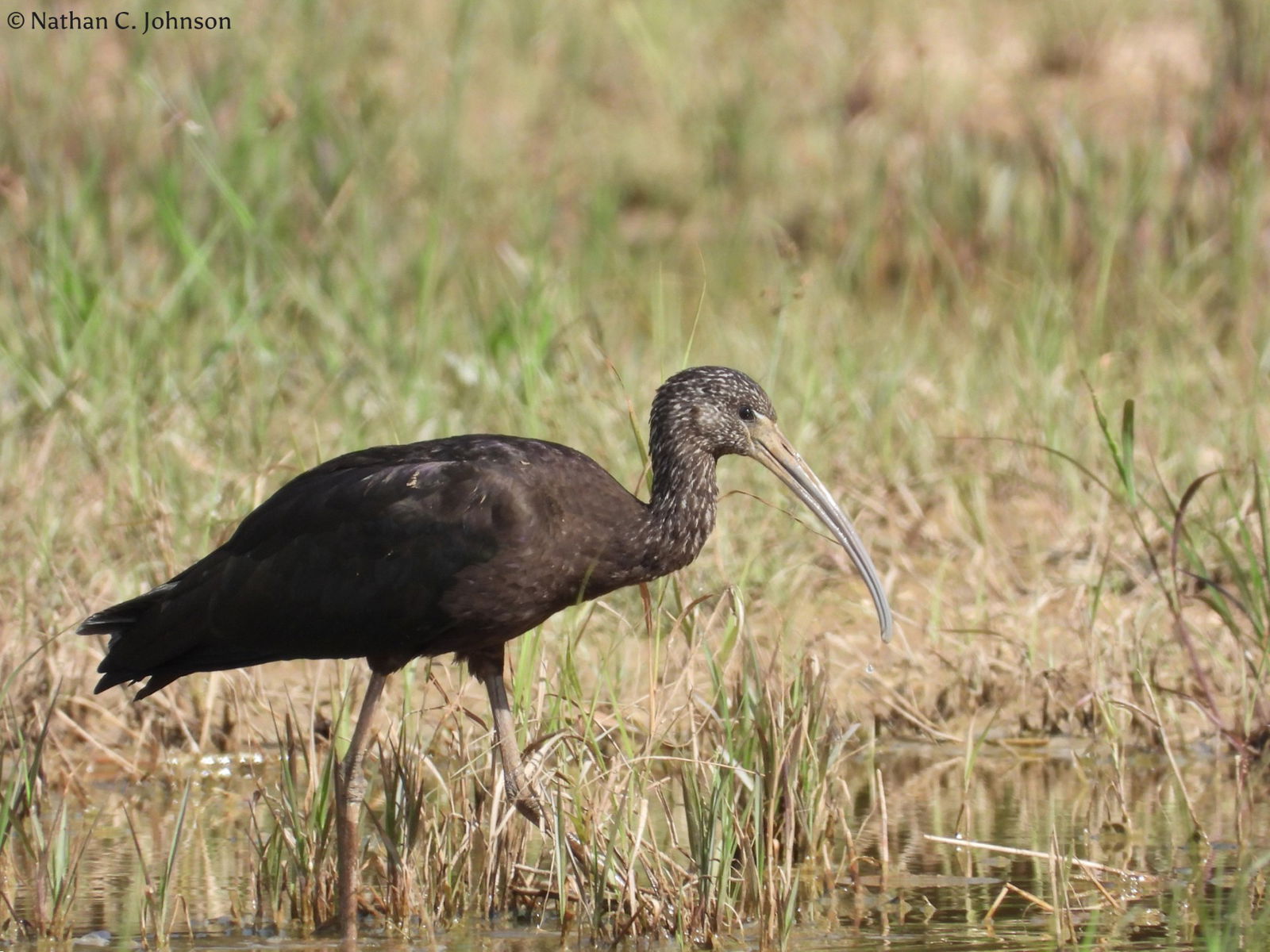
A glossy ibis on Saipan. The bird is rarely observed in Micronesia.
ON Sunday, Oct. 27, a glossy ibis, a bird that rarely is observed in Micronesia, was spotted in a Saipan wetland by an island resident, according to Henry Fandel of the Division of Fish and Wildlife.
The resident who saw the bird “knew it looked different” from local birds and eventually got the word out to DFW, Fandel said.
He and Nathan Johnson, who works for the local environmental consulting firm Micronesian Environmental Services, have since observed the bird in a local wetland area.
The bird is around the size of a Pacific reef heron, or chuchuko in Chamorro, and has a wide global distribution. It is usually found in Europe, Central Asia, the Eastern United States, Central and South America, and Australia.
Fandel said the glossy ibis has only been officially seen three times in all of Micronesia, specifically in Palau.
Fandel said that although the bird doesn’t show up in statistical data, it is still possible that other people in the region have seen the bird but have not recorded their sightings. This is the first time anyone in the Marianas — including Guam — has recorded seeing the glossy ibis locally.
Fandel said the species is known to migrate between its breeding and wintering grounds, which can be far from each other.
With the recent storms that have come to the area, it is possible the glossy ibis was blown off its normal course, he added.
Moreover, with the flooding that has occurred locally due to torrential rain, Saipan is serving as a “good habitat” because the bird prefers wetlands, Fandel said.
He said the presence of a glossy ibis on Saipan is a “cool anomaly.”
“This kind of thing happens often when birds show up in places that are unexpected or outside of their normal distributions because of weather patterns,” Fandel said. “For sure it will happen more often as weather becomes more extreme or storms become more intense — it’s a natural result of those processes.”










